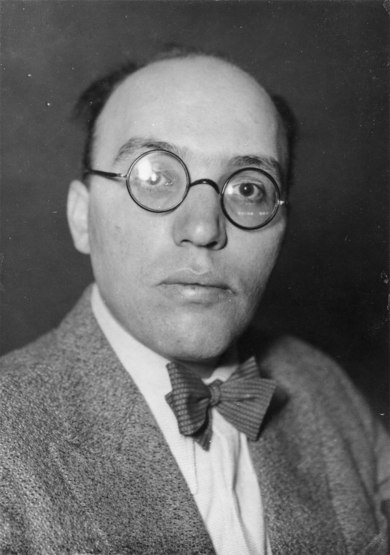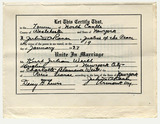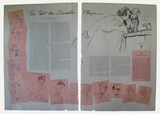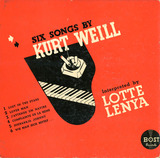Kurt Weill
Obgleich Weill aus Nazideutschland vertrieben wurde, erweckte er bei seiner Ankunft in den Vereinigten Staaten nie den Eindruck eines deutschen oder Wiener Musikers, der glaubte, Amerika musikalisch erziehen zu müssen. Tatsächlich richtete er sich sofort sein neues Zuhause ein, glücklich und aus freien Stücken.
[Although Weill was driven out of Nazi Germany, he never gave the impression on his arrival in the United States of a German or Viennese musician who thought he had to educate America musically. He actually began to conform to his new surroundings from the first moment on, happily and of his own free will. (ed. trans.)]
The composer Luciano Berio about Kurt Weill, 1999
| Born | on 2 March 1900 in Dessau, Germany |
|---|---|
| Died | on 3 April 1950 in New York, United States of America |
| Exile | France, Great Britain (United Kingdom), United States of America |
| Profession | Composer |
Kurt Weill’s musical beginnings were closely bound up to his home town of Dessau. He grew up in a Jewish family and his father was cantor at the local synagogue. He already began composing and performing his pieces publicly as a schoolboy and was able to take up his studies in composing in Berlin at the age of 18. His collaboration with Bertolt Brecht began in 1927 and their first joint production was the Threepenny Opera. Kurt Weill was persecuted immediately after the Nazis came to power, not only because he was Jewish, but also as a representative of Modernism and because of his political stance. He managed to flee Germany, arriving in Paris in March 1933, and shortly afterwards his works fell victim to the book burnings. Following a period of stay in London, Kurt Weill went on board the Cherbourg in September 1935 accompanied by singer Lotte Lenya. They were ostensibly sailing to New York to attend the rehearsals for his stage show The Eternal Road – Der Weg der Verheißung, but the trip turned out to be his final farewell to Europe.
Weill remained in New York and applied for US citizenship in August 1937, which was granted in 1943. Unlike many of his colleagues in exile, he was able to create a new and artistically interesting working and productive situation for himself, which also secured him a living. The theatre landscape of Broadway presented him with the ideal setting in which to realise his ideas about popular musical drama: Lady in the Dark (1941) and One Touch of Venus (1943) were a success on Broadway and made Weill famous.
Selected works:
The Threepenny Opera (orig.: Die Dreigroschenoper, 1928, composed jointly with Bertolt Brecht)
The Rise and Fall of the City of Mahagonny (orig.: Aufstieg und Fall der Stadt Mahagonny, 1930, composed jointly with Bertolt Brecht)
The Eternal Road – Der Weg der Verheißung (1937, libretto: Franz Werfel, director: Max Reinhardt)
Lady in the Dark (1941)
One Touch of Venus (1943)
Further reading:
Farneth, David / Juchem, Elmar / Stein, Dave: Kurt Weill. Ein Leben in Dokumenten und Bildern. Berlin: Ullstein 2000






